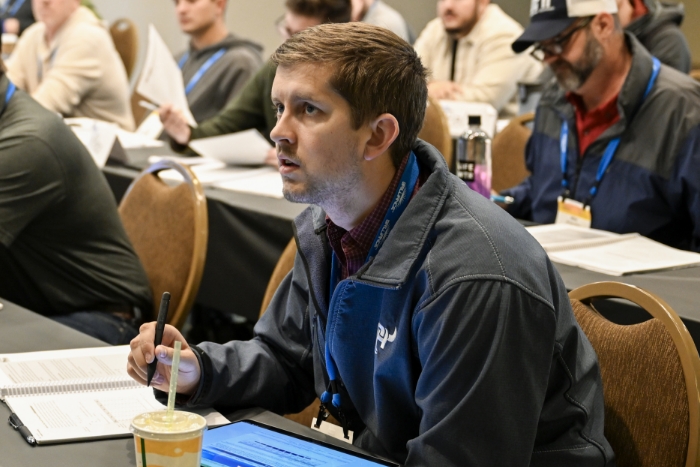As we start to turn some of our thoughts toward some slower-season objectives and activities, I thought I would share some thoughts on staff development and training — specifically, what’s easy, what’s hard and even what’s unrealistic to achieve.
I often get into discussions about making training effective and not just a process of “doing” it. With the advent of many great online learning options, which can be very effective, we do have to be focused on the outcomes of the training, as opposed to just checking a box that you did it. Without getting into a lot of detail, there are tasks and responsibilities of irrigation techs and water managers that are easier to learn. There are also some that are difficult and can take a lifetime of learning to be able to master.
The easy tasks are usually part of a process, and training can be performed by explaining the task, why it is performed, the results, the demonstration and having the learner practice. Installing sprinklers, repairing a break in the piping and replacing many components are among the tasks that are generally easy to train and for the learner to grasp.
As our industry matures and evolves, we are
becoming more proactive in how we manage our systems.
Tasks that are more difficult to train and learn are tasks that are less a process and more about assembling different pieces of information together and deciding the next step toward the outcome. Maybe the outcome is earning an industry certification. The outcomes involve more time, experience with different situations, practice and the learner’s natural abilities. Let’s look at some progressively more challenging skills and concepts.
Hydraulic “relationships”
Keeping water in the pipes, making sure the pipes and equipment are the right size, and following the general rules are critical — but manageable to train and learn. The difficulties begin when we need to understand and anticipate changes in a hydraulic system. What happens when the flow rates change in the piping, when water moves or stops too quickly, or specific porting in our diaphragm valves is blocked? That’s when the learner needs to combine different parts of their learning to evaluate and choose the outcome and next steps.
Electricity
There are two areas here that are challenging for many, and both are important. First is an understanding of electricity and how it flows. The relationship between hydraulics and water is much easier because we can see it, touch it and feel it. With electricity, it is harder to do that and often unadvisable. The second is the concept of troubleshooting where we methodically isolate a problem to determine what the problem is. Sure, we need this skill to diagnose hydraulic and other problems, but with electricity, we must be able to do it without really being able to see it or touch it.
Irrigation vision
As our industry matures and evolves, we are becoming more proactive in how we manage our systems. Instead of simply reacting to problems when they appear, we are expected to anticipate future needs and recognize opportunities to improve or upgrade. This requires a deeper understanding of systems and their performance, which is even more difficult to train and learn.
Landscape health and water
Even more difficult still is assessing plant health to adjust the irrigation system, which layers horticultural knowledge onto understanding irrigation system performance. Landscape irrigation should supplement natural precipitation and utilize the soil as efficiently as possible to move and store the water needed for plants to thrive. Understanding different types of plant materials, water requirements and soil characteristics requires knowledge from a lot of areas. That knowledge then needs to be synthesized to make the right scheduling decision. This is difficult to train and learn.
I’ll stop there with the irrigation-related skills and characteristics, as I could dig in further with customer service, leadership and organizational skills that have the same higher levels of difficulty to learn. And if I started to discuss all the different methodologies to make all this training and learning happen, it would quickly become a book!
My message is this: Recognize the challenges with developing your team and the complexity with training and learning higher-level skills. It takes strategy and effort to get the results you want. Focus on the outcomes of your staff development plans and be realistic about how much time and effort will be required to get them done effectively.
Christopher Pine, CLWM, CID, CIC, CLIA, CIT, MCLP, is a principal of IrriTech Training and the president of BluGreen Solutions in Pocasset, Massachusetts. He can be reached via email.





